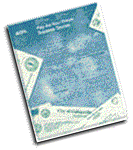Introduction
Success Stories
Real World Results | Learn From Successful Communities | The Bottom Line | For More Information
In a growing number of communities across
the nation, pay-as-you-throw programs are working. This collection of
testimonials presents first-hand stories from communities that faced significant
municipal solid waste (MSW) challenges-issues like increasing amounts
of waste, rising disposal costs, and uncertain MSW budgets-and were able
to use pay-as-you-throw to put their solid waste management back on track.
While the specific issues varied, the leaders of these communities recognized that their old MSW programs needed to change. More reliable funding sources were needed, recycling programs had to be expanded, and, most importantly, they had to begin getting their residents to generate less waste in the first place. Pay-as-you-throw (PAYT) turned out to be the answer.
Real-World Results
The PAYT concept is simple-rather than paying for trash collection and disposal indirectly (often through property taxes), residents under this program are asked to pay for each container of waste they generate. It gives them an incentive to reduce waste, and it can be very effective: after implementing PAYT, communities typically report reductions in waste amounts of 25 to 35 percent, including significant increases in recycling. To date, nearly 2,000 communities across the country have successfully implemented PAYT.
Learn From Successful Communities
For communities considering PAYT, making the switch may seem intimidating. MSW planners may be concerned, for example, that their elected officials will not support the effort. Other planners may feel that the design process is too complicated or that local residents might resist the new program.
Fortunately, decision-makers considering PAYT have an important resource they can turn to: the experience of the many communities that have preceded them. When it comes to questions about how to evaluate, design, and implement PAYT, it's the communities that have successfully adopted a program of their own that can best provide the answers.
Some of the communities featured here had to develop impressive solutions to daunting challenges before their program could become a reality. In most cases, however, these planners simply saw an opportunity in PAYT. They researched the issue carefully and developed a program that, it turned out, met or exceeded their expectations. However they came about, the programs described in this collection are filled with important lessons for interested community planners.
The Bottom Line
Perhaps the single biggest lesson illustrated by these stories is that there is no one "right" way to implement PAYT-just as there is no single compelling reason for communities to adopt this type of program. Every community has a different story to tell and a different lesson to teach. Nonetheless, nearly all the communities detailed here have experienced three specific types of benefits as a result of adopting PAYT:
It's economically sustainable. PAYT is an effective tool for communities struggling to cope with soaring MSW management costs. Well-designed programs enable communities to generate the revenues they need to cover all MSW program costs, including the costs of complementary programs such as recycling and composting. Residents benefit, too, since they finally have the opportunity to take control of their trash bills.
It's environmentally sustainable. Because of the incentive it provides residents to put less waste at the curb, communities with programs in place have reported significant increases in recycling and reductions in waste. Less waste and more recycling mean that fewer natural resources need to be extracted.
It's fair. One of the most important advantages may be the fairness PAYT offers to community residents. When the cost of managing trash is hidden in taxes, or charged at a flat rate, residents who recycle and prevent waste end up subsidizing their neighbors' wastefulness. Under this kind of program, residents pay only for what they throw away.
For More Information
The stories presented here highlight successful strategies for implementing all types of PAYT programs in all kinds of communities. This Web site contains additional materials that can help planners and others as they search for economically and environmentally sustainable solutions to today's solid waste management challenges.
To order a complete set of Pay-As-You-Throw Success Stories free of charge, call 1-888-EPA-PAYT or access our online order form.![[logo] US EPA](../gif/logo_epaseal.gif)